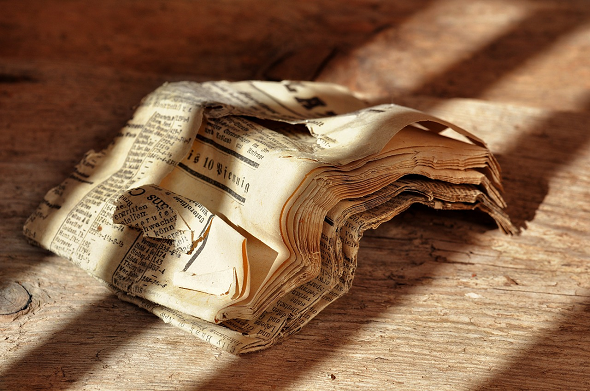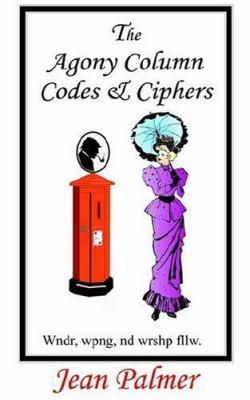In 1873, an unknown person published two encrypted advertisements in the Daily Telegraph. Can a reader break these cryptograms?
First of all, let me mention that the Call for Papers for HistoCrypt 2020 has been published today. I hope, there will be many interesting submissions.
At HistoCrypt 2019, which took place in Belgium, I presented a paper about Ernest Rinzi’s encrypted journal, co-authored by Tony Gaffney. Tony is not only an outstanding codebreaker, but has also written a great book titled The Agony Column Codes & Ciphers (under the pseudonym Jean Palmer).
The Agony Column Codes & Ciphers is a treasure trove for everybody interested in old cryptograms. It introduces over a thousand encrypted newspaper advertisements from Victorian England. Tony has deciphered most of these, but some are still unsolved. On Klausis Krypto Kolumne I have published many an article about these advertisements.
Many of the encrypted ads covered in Tony’s book contain love messages. Others were placed by business people in order to send news to partners or customers. Ignatius Pollaky, a private investigator of the Victorian era, communicated via encrypted newspaper ads, too.
Two ads from 1873
Some of the ads in the book make long series, the longest of which consist of over 50 parts. The advertisements I am going to introduce today form a series, too, but this one comprises only two ads. They were published in the Daily Telegraph in 1873. The first one is reproduced in the following:
Fri 7th Feb 1873
TOUJOURS BLEU. – 7.64. 13,141. 24.24. 18,299. 1,317 8,481X – 1,274. 32,561 29,375 13,127 28,801. 32,561. 21,8 21,221X 28,59. 39,629. 28,59 39,629 29,544 25,138 29,219 7,64X – 29,219 17,77 6,582 1,384 16,243 29,219 19,367 8,226 18,176 33,383X – 36,547. 8,39 2,379 2,4 27,609 32,561 9,324 21,367 9,629 28,59 12,361 32,104 6,381 1,268 38,498 25,411 32,561 2,140X – 1,268 14,527 33,212 38,616 8,335X – 2,495 3,379 20,320 32,561 29,422 1,257 24,24 24,485 40,618 1,268 40,338 15,198. 21,367X – 19,420 2,407X – 25,618 11,390 40,629 32,252 27,538X – 18,411 10,422 2,185X – 27,254 2,221X – 40,204 8,347 20,388 8,347 40,325 8,347 36,621 8,347 25,239 32,24 1,268 8,306 1,268 8,306 1,268 5,58 40,629 5,19 5,19 4,386X 22,451 29,329 22,451X – 12,262X 15,50 10,66X 13,572 32,561 1,384 12,579 12,194 40,325X 8,347 7,518 12,629 29,219 26,106 1,624 21,556X 40,238 16,438 2,555X.
“Toujours bleu” is French and means “always blue”. Here’s the second ad:
Thu 27th Feb 1873
ANTETYPE. – 8.347, 20.388X 1.317, 12.269, 20.28, 10.622, 15.50, 2.495 8.481. 32.561. 8.501X 1.268, 32,252, 12.455, 1.317, 8.226, 6.630 9.266, 2.4, 7.73X 24.627, 32.561, 27.556, 31.302. 28.185, 19.31X 25.264, 1.268, 32.252, 12.629, 29.219, 2.555X 21.367, 9.629, 12.361, 15.50, 25.138X 1.268, 13.572, 35.562, 2.555X 1.268, 8.306, 39.558, 11.606, 7.518X 40.204
“Antetype” is another word for “prototype”. I couldn’t find this expression in a French dictionary, so apparently we are dealing with an English word here.
A book cipher?
As can be seen, both ads mainly consist of number groups, each divideded into two parts by a period or a comma. The numbers before the period/comma are smaller than the ones behind.
It is clear that these number groups are consistent with a book cipher. An expression such as 12.269 might stand for the 269th letter on page 12 of a certain book. The X at the end of some groups might mean that instead of one letter the whole word is relevant.
As is well known, breaking a book cipher is difficult, if not impossible, without knowing the book that was used. To my regret, I have no idea which book the unknown creator of these two ads might have used. Considering that it is quite annoying to find out the, say, 555th letter on a page, the book in question might contain tables or some other kind of sorted information that makes it easier to find a letter at a certain position.
Can a reader make more sense of these cryptograms? If so, please let me know.
Follow @KlausSchmeh
Further reading: The Top 50 unsolved encrypted messages: 38. The Sufi Fiddle mystery
Linkedin: https://www.linkedin.com/groups/13501820
Facebook: https://www.facebook.com/groups/763282653806483/




Kommentare (9)